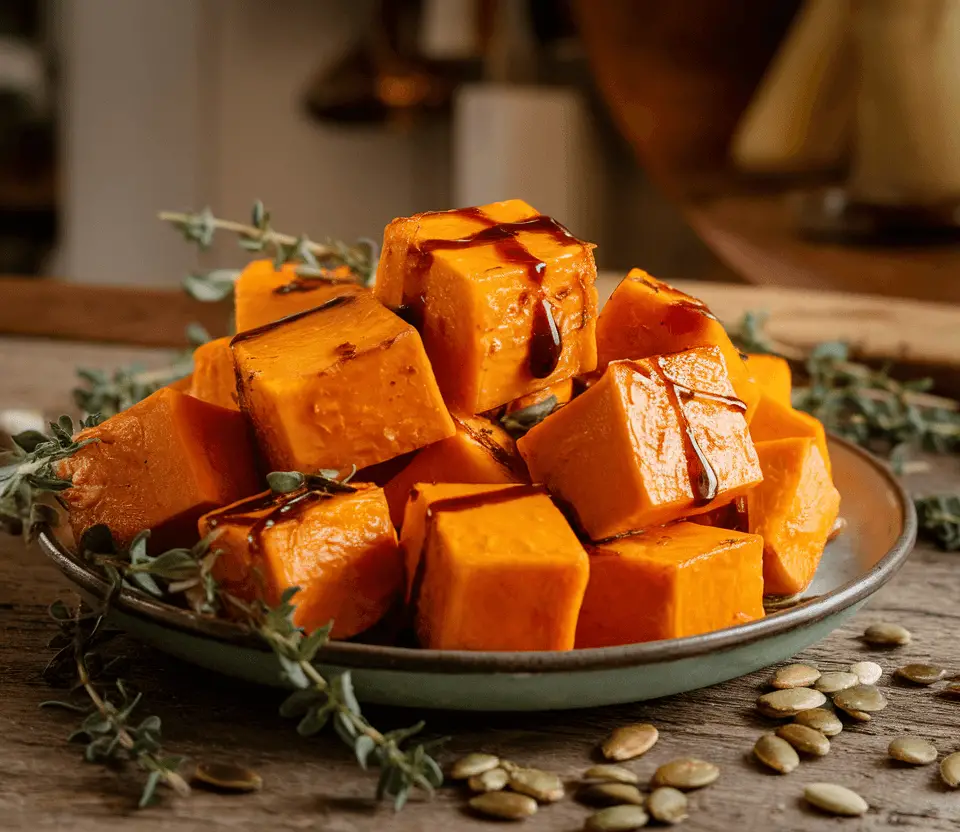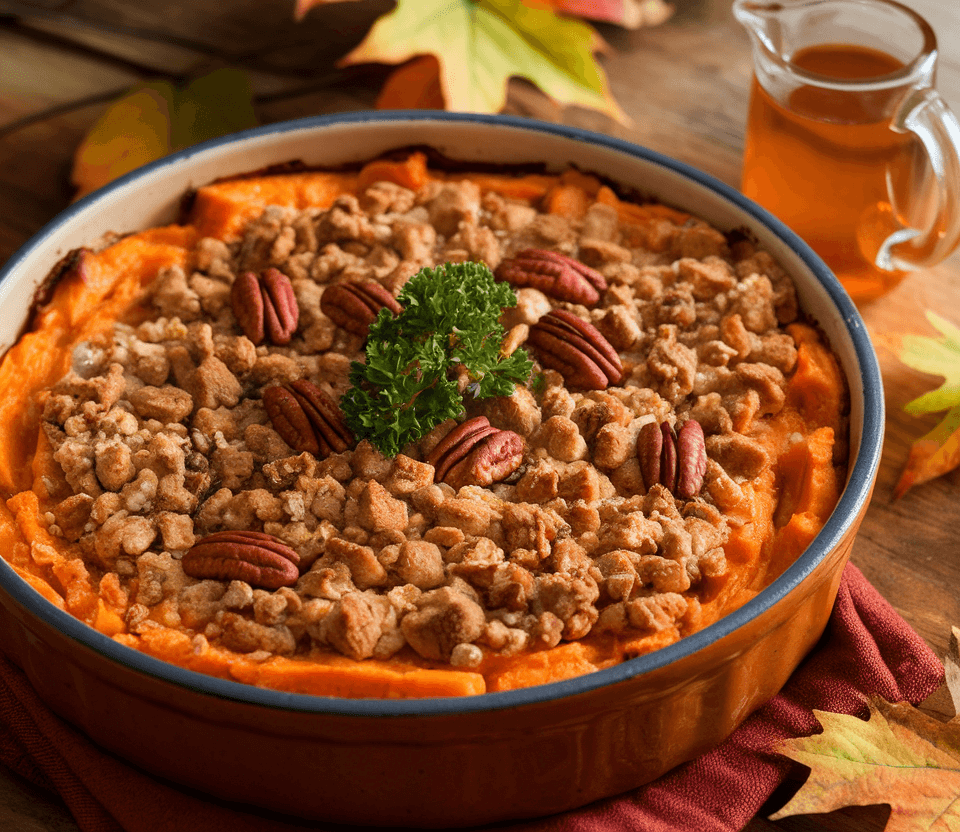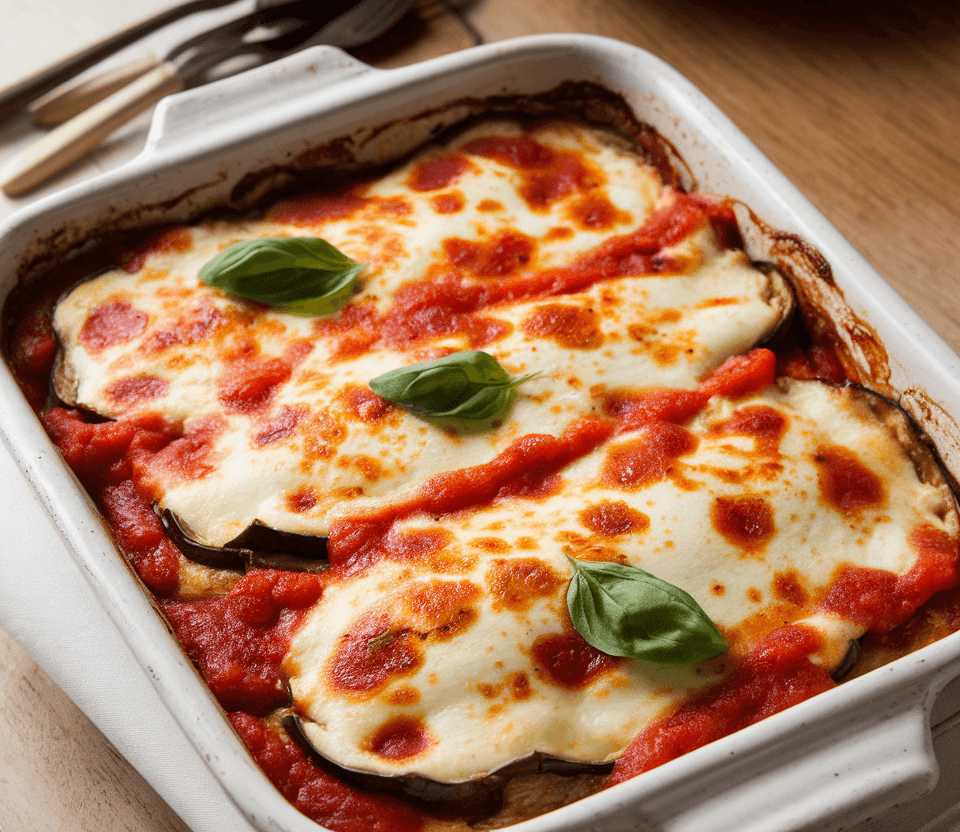This delightful butternut squash recipe showcases the rich, creamy texture and sweet, nutty flavor of this autumnal favorite. Roasted to perfection and tossed with aromatic herbs, this dish is not only comforting but also a vibrant addition to any table. With its stunning golden-orange hue and a sprinkling of fresh herbs, it’s sure to impress both family and guests alike. Perfect as a side dish or a vegetarian main, this recipe is versatile and satisfying, embodying the essence of wholesome, seasonal cooking.

Why You Will Love This Recipe
You will fall in love with this butternut squash recipe for its incredible flavor profile and ease of preparation. The natural sweetness of roasted butternut squash pairs beautifully with savory herbs and spices, creating a dish that is both comforting and elegant. It fits perfectly into a variety of dietary lifestyles, from vegetarian to gluten-free, making it an excellent choice for gatherings. Plus, the simple roasting technique allows for a hands-off cooking experience, leaving you with more time to enjoy your meal and company.
Tips and Tricks
To make this butternut squash recipe even easier, consider using pre-cut squash available at most grocery stores. If you’re cutting the squash yourself, a sharp knife and a sturdy cutting board are key to safe and efficient preparation. Roasting at a high temperature (around 400°F) caramelizes the sugars in the squash, enhancing its flavor. For added depth, try tossing the squash with a pinch of smoked paprika or cayenne for a subtle kick. Lastly, make sure to spread the pieces out on the baking sheet to ensure even roasting without steaming.
Common Mistakes to Avoid
One common mistake when making this dish is overcrowding the baking sheet, which can lead to steaming instead of roasting. Make sure there’s enough space between the squash pieces for proper air circulation. Additionally, avoid overcooking the squash; it should be tender but not mushy. Seasoning is also key—be generous with salt, pepper, and any herbs you choose, as this brings out the squash’s natural flavors. Lastly, don’t skip the garnish! Fresh herbs or a squeeze of lemon can elevate the dish significantly.
Make Ahead Tips
To save time on busy days, you can prep the butternut squash in advance. Peel and cube the squash, then store it in an airtight container in the refrigerator for up to 3 days. If you’re planning to make the dish a day ahead, roast the squash and store it in the refrigerator; simply reheat in the oven or microwave before serving. This dish also freezes well—just ensure it’s completely cooled before transferring to a freezer-safe container, where it can last up to 3 months.
Recipe Variations
There are numerous ways to switch up this butternut squash recipe! For a heartier option, add chickpeas or lentils for protein. For a Mediterranean twist, try incorporating olives, feta cheese, or sun-dried tomatoes. You can also experiment with different spices; nutmeg and cinnamon can add warmth, while curry powder offers an exotic flavor. If you prefer a creamy texture, blend the roasted squash with vegetable broth to create a delicious soup.

How to Serve
To serve, arrange the roasted butternut squash on a large platter or individual plates, allowing the vibrant color to shine. Drizzle with a balsamic reduction or a sprinkle of toasted pumpkin seeds for added crunch. For a fresh touch, garnish with chopped parsley or sage leaves. This dish pairs beautifully with a simple green salad or whole grains like quinoa or farro, making it a wholesome meal.
Pairing Suggestions
For drink pairings, a crisp white wine like Sauvignon Blanc complements the sweet flavors of the squash, while a light-bodied red like Pinot Noir can also work well. If you prefer non-alcoholic options, a spiced apple cider can enhance the autumn vibes. As for sides, consider serving it alongside roasted vegetables or a warm grain salad. For dessert, a slice of pumpkin pie or a spiced cake will round out the meal perfectly.
How to Store
Leftovers can be stored in an airtight container in the refrigerator for up to 4 days. If you want to freeze your butternut squash, portion it into freezer-safe bags or containers, where it can last for up to 3 months. When reheating, use the oven for best results—spread it on a baking sheet and heat at 350°F until warmed through. You can also reheat in the microwave, but be mindful not to overcook it.
Equipment Needed
To make this butternut squash recipe, you will need:
- A sharp chef’s knife for cutting
- A sturdy cutting board
- A large baking sheet
- Parchment paper (optional for easy cleanup)
- Mixing bowl for tossing the ingredients
If you don’t have a baking sheet, a large casserole dish will work in a pinch!
Dietary Adaptations
This recipe can easily be made vegan and gluten-free. To make it vegan, simply ensure all seasonings and added ingredients (like cheese) are plant-based. For a nut-free version, avoid any nut-based toppings or garnishes. If you need to adapt for allergens, substituting olive oil for butter ensures it remains friendly for most dietary restrictions.
Seasonal Adaptations
In the fall and winter months, fresh herbs like sage and thyme are perfect for this dish. In spring, consider brightening it up with herbs like basil or dill. During summer, add in fresh zucchini or bell peppers for a seasonal twist. You can also experiment with seasonal spices like pumpkin pie spice during the fall.
Cost Breakdown
Estimated cost per serving for this butternut squash recipe is around $2-3, depending on ingredient quality and local prices. For a budget-friendly option, consider using frozen squash or buying in bulk during peak season when prices are lower.
Kitchen Hacks
Peeling butternut squash can be a pain; try microwaving it for 2-3 minutes to soften the skin, making it easier to peel. A vegetable peeler works well for this task. Also, if you want to save time, you can use a food processor fitted with a chopping blade to quickly cube your squash!
Recipe FAQs
Q: Can I use a different type of squash?
A: Yes, acorn or kabocha squash can be good substitutes, but cooking times may vary.
Q: How do I know when the squash is done?
A: The squash should be tender when pierced with a fork and golden brown on the edges.
Q: Can I make this dish ahead of time?
A: Absolutely! You can roast the squash in advance and store it in the fridge until you’re ready to serve.
How To Make butternut squash recipe
Ingredients
- 1 medium butternut squash
- 2 tablespoons olive oil
- 1 teaspoon salt
- ½ teaspoon black pepper
- 1 teaspoon dried thyme or rosemary
- Optional: ¼ cup maple syrup or honey for added sweetness
- Optional: Fresh herbs for garnish
Detailed Instructions
1. Preheat the oven to 400°F (200°C).
2. Carefully peel the butternut squash using a vegetable peeler. Cut off the ends and slice it in half lengthwise. Remove the seeds with a spoon.
3. Cut the squash into 1-inch cubes and place them in a large mixing bowl.
4. Drizzle the olive oil over the squash, and season with salt, pepper, and dried herbs. Toss until well coated.
5. Spread the seasoned squash evenly on a baking sheet lined with parchment paper.
6. Roast in the preheated oven for 25-30 minutes, or until tender and slightly caramelized, stirring halfway through.
7. If using, drizzle with maple syrup or honey during the last 5 minutes of roasting.
8. Remove from the oven, garnish with fresh herbs, and serve warm.
Final Thoughts
This butternut squash recipe is a true celebration of fall flavors and is sure to be a hit at any gathering. With its simplicity and versatility, it can easily be adapted to fit any occasion or dietary need. Don’t hesitate to get creative with your seasonings and toppings, and enjoy this delicious, nutritious dish that embodies the spirit of home-cooked meals. Happy cooking!







